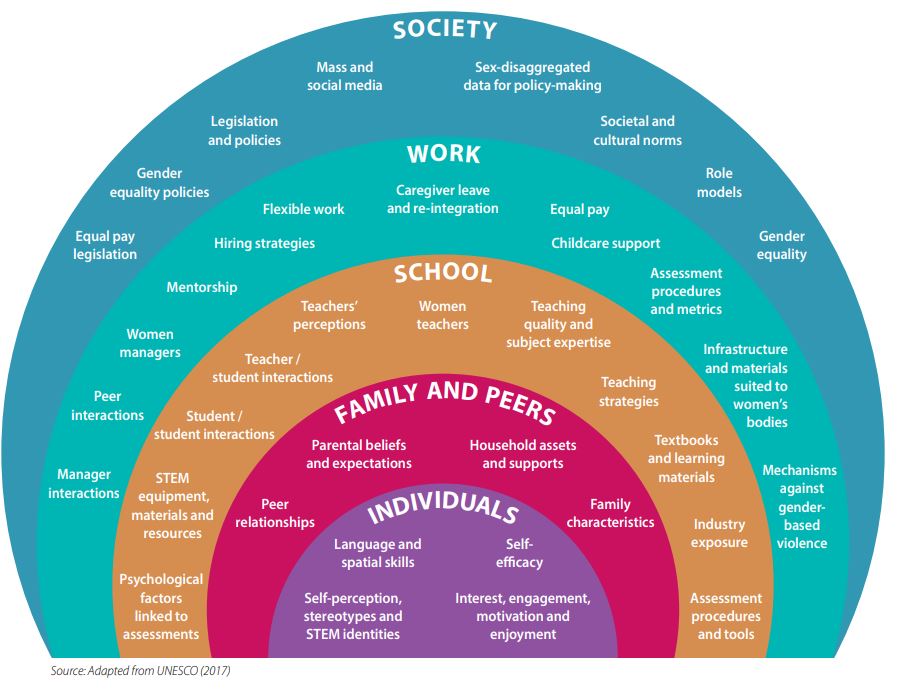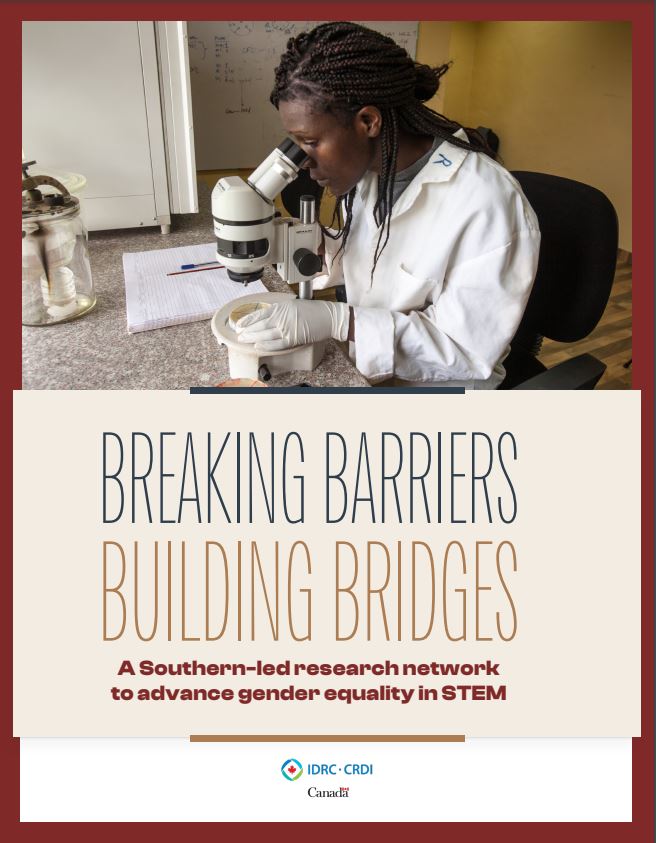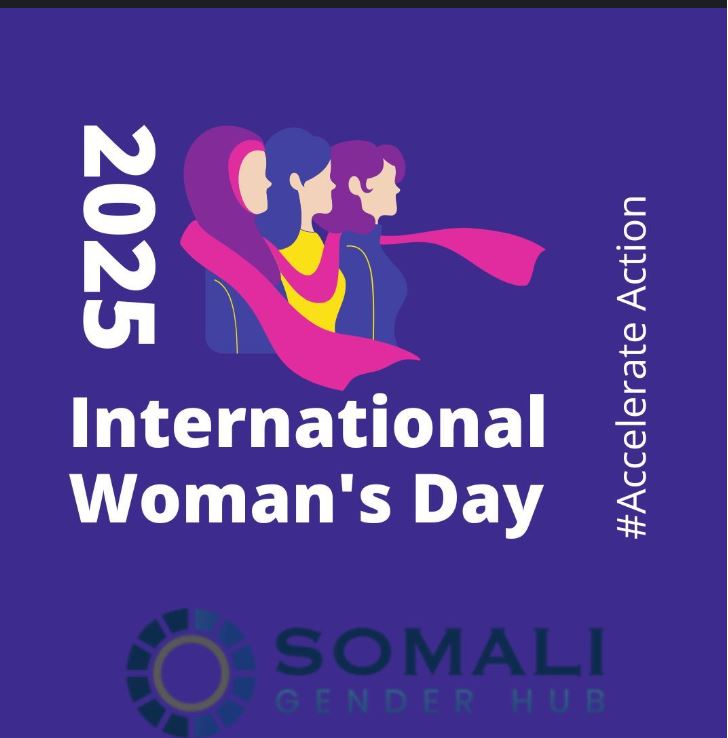In this blog post, Zara Qadir, Founding Editor of the Global Souths Hub and science communicator, delves into the underlying causes of gender disparities in STEM that hinder women from rising to leadership roles in science and technology.
In today’s world, STEM skills are essential for tackling global challenges, which makes inclusive representation more important than ever. 2025 marks the 10th anniversary of the International Day of Women and Girls in Science (IDWGS) — a key moment to reflect on the progress of women in science, technology, engineering, and medicine (STEM) over the past decade. This milestone aligns with Women’s History Month, spotlighting achievements and ongoing challenges to women’s equality.
In 2023, a UN report found that women made up only 35% of STEM graduates and 22% of the STEM workforce in the G20 countries. Despite progress, women still remain underrepresented in many STEM fields, especially in senior and leadership roles. This disparity raises questions about the barriers women face in their careers and how representation varies across regions. What underlying factors contribute to this gap and which people and initiatives —government programs, entrepreneurs, and grassroots movements—are challenging gender and regional biases to drive change?
Invisible Contributions of Women Scientists
Women have shaped scientific progress for centuries, but women’s contributions have often been undervalued, or remain invisible. The Wikipedia page, ‘Timeline of Women in Science‘, chronicles the hundreds of key female scientists and their contributions throughout history. Margaret W. Rossiter, a historian of science, claims that American women were first employed in significant numbers in the late 18th and early 19th century in higher education. Seen as having ‘unique talents’, they were often segregated in low wage roles with little opportunity for advancement. It was also assumed that most women were only working temporarily ‘seeking personal fulfillment’ before returning to their more permanent roles as wives, mothers and daughters.
Still, during this time, women revolutionised the world of astronomy. In The Glass Universe, science writer Dava Sobel tells the story of how women at the Harvard Observatory meticulously mapped the night sky. Despite their groundbreaking contributions, their efforts were dismissed again as ‘low-status women’s work.’ Labeled merely as ‘human calculators,’ they were pushed into the shadows of history, and denied the recognition that they deserved. This historical sidelining has had long lasting effects; the scarcity of highly visible female scientists in the past has resulted in a persistent lack of role models for aspiring women in STEM today.

Breaking Down Barriers for Women in STEM Worldwide
The gender gap in STEM persists into the 21st century, but understanding the gap is complicated by a lack of data. As feminist author Caroline Criado Perez highlights in her book Invisible Women, this lack of gender data impacts women across various fields, not just in STEM. A combination of historical, social, cultural, economic, and institutional factors all contribute to the challenges women face throughout their scientific careers. These include societal pressures, cultural biases, and a lack of representation. A recent UNESCO report, Changing the Equation: Securing STEM Futures for Women (2024) unearthed an alarming statistic, finding that over a third of women reported sexism, harassment, or gender-based violence as being a top challenge. This semi-circular diagram illustrates this complexity and the numerous influences on girls’ and women’s participation, achievement and progression in STEM.

The Leaky Pipeline: Challenges for Women STEM Graduates
Women remain underrepresented globally – though the extent of this varies by region, country, field and career stage. In some scientific areas, gender parity is close, at least for undergraduates. For example, in natural sciences, mathematics, and statistics, women earn 54% of the postgraduate degrees in OECD countries with even higher rates—nearly 70%—in several Global South nations — Algeria, Indonesia, Kyrgyzstan, Malaysia, Qatar, Thailand, Tunisia, and Uruguay (WorldBank, 2020).
But how does representation change after graduation? Worldwide, women still only make up 35% of the world’s researchers, a figure that has not really shifted in a decade. After completing their degrees, women face significant trials in entering and staying in the workforce compared to their male peers. This phenomenon, known as the “leaky pipeline,” refers to the gradual loss of women from STEM careers at various stages — this loss of diversity, talent, and innovation ultimately hinders progress.
Women are more likely to leave STEM professions within the first 10 years of their careers compared to men (National Center for Women & Information Technology, 2016). Michelle, an Engineer and Energy Planner in Kenya, highlighted the barriers women face in STEM. Reflecting on her first job at a power plant, she shared: “I had to be on standby for nighttime emergencies, but safety concerns required a company vehicle to pick me up. My boss understood and exempted me. This challenge isn’t unique to me—it affects many women in scientific fields like manufacturing.”
In some countries, women do remain in STEM longer and make up a significant portion of researchers. For example, in Central Asia the percentage of female researchers ranges from 37.5% in Tajikistan to 52.8% in Kazakhstan. In other Asian countries, such as Azerbaijan, Tunisia, and Thailand and several Latin American countries, including Bolivia and Venezuela women dominate the R&D field. Further investigation is required to uncover the factors that drive gender parity, and to also understand how these successes can be replicated elsewhere.
A recent Nature Reviews Psychology article examined the reasons behind global gender disparities in STEM and found that where women have access to education and job opportunities, “masculine cultures” — shaped by both masculine defaults and differential treatment – often hinder women’s success. The defaults, for example, could be valuing innate brilliance (often linked with masculinity), rewarding self-promotion and reinforcing stereotypes that women don’t belong in STEM. They also cited differential treatment as often being part of this culture, for example, in denying women promotional opportunities and ignoring workplace harassment.
The STEM gender gap in the Global South
Historically, studies on gender disparity have focused on countries within the Global North. A recent review paper addressed the issue of missing datasets in STEM research, particularly in the fields of computer science (CS), artificial intelligence (AI), and data science (DS), and their impact on understanding the gender gap. Focusing on Mexico as a case study, the authors highlighted that missing datasets about women in STEM are a significant problem. The paper suggests that the first step in understanding the gender imbalance in these fields is to “complete” existing datasets by collecting and recording the contributions of women through history.

Research that unearths the reasons for gender disparity is vital to combating underrepresentation. A Southern-led research network of 15 projects across Asia, Africa, and Latin America, known as the Breaking Barriers Network (BBN) supported by the Canadian International Development Research Centre (IDRC), is working on exploring and dismantling systemic barriers hindering women’s participation and leadership in STEM, particularly in the Global South. The BBN recently published their report (Breaking barriers, building bridges) in February 2025, which includes insights from the partners and projects, highlighting solutions that go ‘beyond access’, calling for more supportive environments to retain female students and workers.
One BBN project in Colombia found that women working in green/ renewable industries often occupy lower-skilled roles with limited career advancement. To address this disparity, lead investigator, Paola Vásquez, an Associate Professor at Universidad Autónoma de Occidente, introduced an hands-on environmental pilot at her university, taking learning into real-world settings The female apprentices worked alongside female STEM role models, including environmental engineers and sustainability experts, designing and operating green technologies. Vásquez says this method not only increased their knowledge and built their confidence, it also helped break gender stereotypes by showing how real women in STEM were “leading the transformation of polluting industries into greener practices”. As she emphasised, ‘Sustainability is not possible without gender equity in STEM.’” (see their online report launch video for more info).
In the past two decades, Kazakhstan has launched extensive initiatives to tackle gender segregation in the labor market. Despite this, a UNDP study found that 54% of citizens view STEM careers as unsuitable for women. A recent 2024 Central Asian Survey paper explored the experiences of young women in male-dominated STEM companies in Kazakhstan, identifying difficulties in recruitment, promotion, and work-life balance as key barriers. The authors also found that conflicting gender expectations can limit women’s confidence and independence when entering STEM careers. Women often start working at a time when societal norms push them to prioritise motherhood over their careers. One participant shared her experience: “It is more difficult for women to build a career in STEM, because there are always stereotypes that women are not good in engineering, physics and mathematics. Engineering is mostly associated with masculinity. A young woman especially is not perceived as a serious worker. They think that she is doing it temporarily and once she gets married she will leave everything.”
Enhancing and Sustaining STEM Participation in the Global South
Without being tailored for an individual country, policies to retain women in STEM can fail to address the differences in social and cultural norms and also degrees of support structures. Gender equality and inclusion are often overlooked in the science, technology, and innovation agendas for low and middle-income countries. However, many governments have been successful in tailoring and implementing policies to support women and girls in STEM. Vietnam, for instance, has introduced career guidance and peer-mentoring programs to challenge gender stereotypes.
Similarly, in Somalia, Sahra Ahmed Koshin, through the Somali Gender Hub, is advocating for better policies and strategies to increase the representation of Somali women in research and academia. “Gender-sensitive hiring and promotion policies are essential to ensure equal opportunities through transparent and fair recruitment, tenure, and promotion systems. Somalia also lacks parental leave and caregiving support, which are vital for maternity and paternity leave, childcare support, and flexible work arrangements for female employees,’ explains Sahra.

Sahra also called for the adoption of anti-harassment or anti-discrimination policies, which are necessary to combat gender-based abuse. “Universities could implement quotas or affirmative action to boost women’s representation in leadership and research roles. Mentorship, funding, and research opportunities specifically tailored for women are also crucial for fostering their success.”
In the past decade, grassroots movements have also emerged to address structural issues affecting women in science. In Brazil, women in academia often face a decline in their publication records immediately after they have children. In 2016, Brazilian biologist Fernanda Staniscuaski founded Parent in Science (PiS) to tackle this disparity, to support parents, and advocate for institutional changes. Staniscuaski highlighted the unique challenges she and others faced during the pandemic with childcare and schooling in a letter to the journal, Science, stressing that ‘policies and actions to mitigate the motherhood penalty can benefit all scientists.’ PiS saw a major breakthrough in 2021 when a federal scientific database decided to include and recognise career breaks as a factor that influences academic productivity. This change acknowledged the impact of life events, such as parenthood, on academic careers. PiS now works across Latin America and the Caribbean. Listen to an interview with Staniscuaski in the Nature Careers podcast (‘Maybe I was never meant to be in science’: how imposter syndrome seizes scientist mothers).
The invisibility of Women in Scientific Leadership
The underrepresentation of women in senior leadership roles, whether in academia or industry, is of course a global issue, and is not limited to the Global South. Since the Nobel Prizes were established in 1901, only 25 women have received awards in the sciences, out of a total of 646 laureates. Being a member of a national scientific academy means having the power to influence policy, drive innovation, and ultimately shape your field and the wider world, but a survey conducted between 2015 and 2020 across more than 120 national science academies and associations revealed that for every five male members, there is only one woman.
Gender biases in academic authorship contribute also significantly to the marginalisation of women, especially in becoming leaders in their field, as demonstrated by PiS. A 2022 ranking of the top 100 women scientists globally, published by US-based Research.com, analysed 166,880 profiles based on H-index and revealed the ongoing academic gender bias underscoring how such biases impact women’s visibility and recognition in science. Incidentally, only 2% were women from countries in the Global South, (though the H-index has been criticised for regional biases). A Brazilian study of the top 100,000 scientists also reveals that male scientists may improve their rankings through self-citations, highlighting further biases in how scientific achievements are recognised. Women and Global South scholars also remain underrepresented in critical fields, such as ecology, where their expertise is essential.
Women scientists and engineers are making significant strides in STEM especially in certain fields and regons, yet many still lack global and peer recognition. However, this is slowly changing. In 2020, the Nigerian Academy of Science elected parasitologist Ekanem Braide as its first female president. Mónica Moraes biologist specialised in palm trees, became the first female President of the Bolivian Academy of Sciences from 2021 to mid-2024. In 2022, Brazilian biomedical scientist Helen Nader was elected becoming the first woman president of the Brazilian Academy of Sciences in over a century. Helen is a strong advocate for gender, racial, and ethnic equity in science. In the same year, Wangari Maathai, the Kenyan biologist, activist, and Nobel laureate, founder of The Green Belt Movement, who left a lasting legacy to environmentalism and social justice, was honored by the UN Postal Association (UNPA) on a commemorative stamp.

Closing the Gender Gap in STEM
Despite decades of progress, historical invisibility, workplace discrimination, leadership gaps and systemic biases continue to stifle women’s full participation in science and technology especially in the leadership roles. While the push for change is strong, recent shifts in the diversity, equity, and inclusion (DEI) landscape risk slowing progress. Grassroots movements like Parent in Science, research networks like the Breaking Barriers Network (BBN) and mentorship programmes such as the Somali Gender Hub are address gender disparities in higher education, research and workplace by promoting policies and solutions that support women’s participation.
True equity in STEM requires gender-sensitive policies that ensure equal pay, workplace safety, and equal access to opportunities. Diversity is not just about representation—it drives innovation. Inclusive hiring, policy reforms, and recognising women’s contributions are key. By closing these gaps and amplifying women’s voices, STEM can become a stronger, more equitable and dynamic field.
The views and opinions expressed in this blog post are solely those of the blog post author. These views and opinions do not necessarily represent those of Global Souths Hub and/or any/all contributors to this site.



